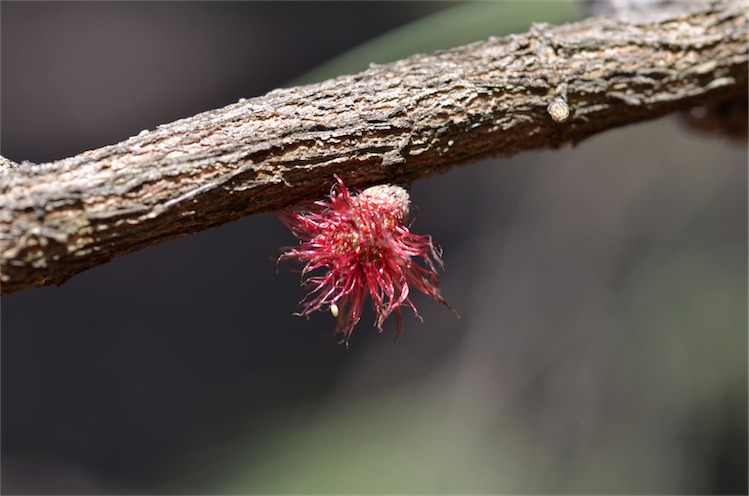Allocasuarina Scleroclada on:
[Wikipedia]
[Google]
[Amazon]
 ''Allocasuarina scleroclada'' is a species of flowering plant in the family
''Allocasuarina scleroclada'' is a species of flowering plant in the family
Occurrence data for ''Allocasuarina scleroclada''
from The Australasian Virtual Herbarium {{Taxonbar, from=Q15375504 scleroclada Rosids of Western Australia Fagales of Australia Dioecious plants Plants described in 1972 Taxa named by Lawrence Alexander Sidney Johnson
 ''Allocasuarina scleroclada'' is a species of flowering plant in the family
''Allocasuarina scleroclada'' is a species of flowering plant in the family Casuarinaceae
The Casuarinaceae are a family of dicotyledonous flowering plants placed in the order Fagales, consisting of four genera and 91 species of trees and shrubs native to eastern Africa, Australia, Southeast Asia, Malesia, Papuasia, and the Pacifi ...
and is endemic
Endemism is the state of a species being found in a single defined geographic location, such as an island, state, nation, country or other defined zone; organisms that are indigenous to a place are not endemic to it if they are also found elsew ...
to areas along the south coast of Western Australia. It is a straggly, dioecious
Dioecy (; ; adj. dioecious , ) is a characteristic of a species, meaning that it has distinct individual organisms (unisexual) that produce male or female gametes, either directly (in animals) or indirectly (in seed plants). Dioecious reproductio ...
shrub that has branchlets up to long, the leaves reduced to scales in whorls of ten or eleven, the mature fruiting cones long containing winged seeds long.
Description
''Allocasuarina scleroclada'' is a straggly, dioecious shrub that typically grows to a height of . Its branchlets are up to long and drooping, the leaves reduced to scale-like teeth long, arranged in whorls of ten or eleven around the branchlets. The sections of branchlet between the leaf whorls are long, wide. Male flowers are arranged in spikes long, theanthers
The stamen (plural ''stamina'' or ''stamens'') is the pollen-producing reproductive organ of a flower. Collectively the stamens form the androecium., p. 10
Morphology and terminology
A stamen typically consists of a stalk called the filam ...
long. Female cones are sessile
Sessility, or sessile, may refer to:
* Sessility (motility), organisms which are not able to move about
* Sessility (botany), flowers or leaves that grow directly from the stem or peduncle of a plant
* Sessility (medicine), tumors and polyps that ...
and glabrous, the mature cones more or less cylindrical, long and in diameter, containing black, winged seeds long.
Taxonomy
This she-aok was first formally described in 1972 by Lawrie Johnson, who gave it the name ''Casuarina scleroclada'' in the journal ''Nuytsia
''Nuytsia floribunda'' is a hemiparasitic tree found in Western Australia. The species is known locally as moodjar and, more recently, the Christmas tree or Western Australian Christmas tree. The display of intensely bright flowers during the ...
'', from specimens he collected near Caiguna in 1967. In 1982, Johnson transferred the species to ''Allocasuarina'' as ''A. scleroclada'' in the ''Journal of the Adelaide Botanic Gardens
The Adelaide Botanic Garden is a public garden at the north-east corner of the Adelaide city centre, in the Adelaide Park Lands. It encompasses a fenced garden on North Terrace, Adelaide, North Terrace (between Lot Fourteen, the site of the old ...
''. The specific epithet, (''scleroclada'') means "hard branch".
Distribution and habitat
''Allocasuarina scleroclada'' grows in scrub and low woodland, on rocky hillsides and on limestone shelves near the sea. It occurs in scattered places along the coast of Western Australia between Borden and the western part of the Great Australian Bight in the Coolgardie,Esperance Plains
Esperance Plains, also known as Eyre Botanical District, is a biogeographic region in southern Western Australia on the south coast between the Avon Wheatbelt and Hampton bioregions, and bordered to the north by the Mallee region. It is a pl ...
and Mallee bioregions of southern Western Australia.
References
External links
Occurrence data for ''Allocasuarina scleroclada''
from The Australasian Virtual Herbarium {{Taxonbar, from=Q15375504 scleroclada Rosids of Western Australia Fagales of Australia Dioecious plants Plants described in 1972 Taxa named by Lawrence Alexander Sidney Johnson